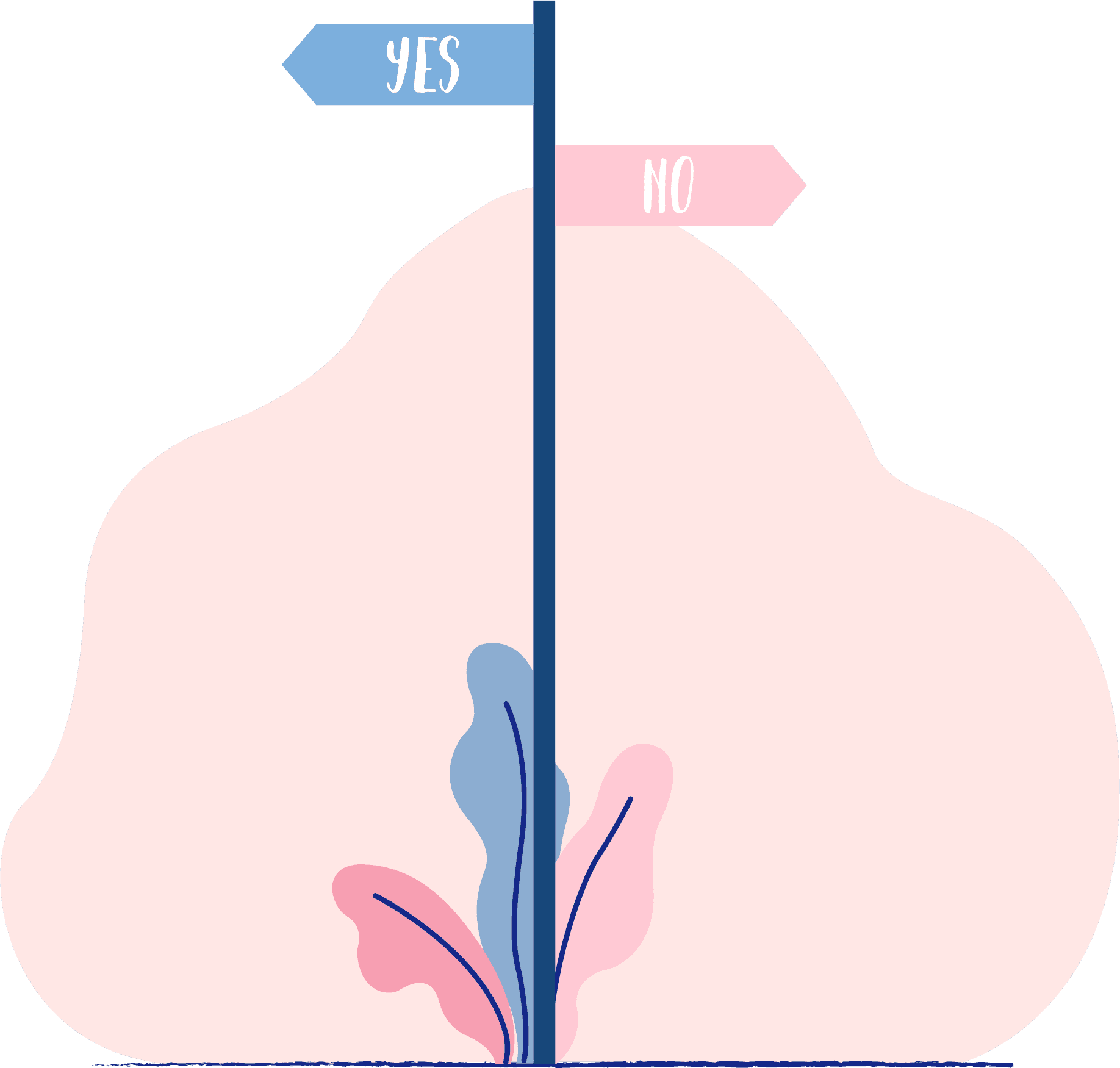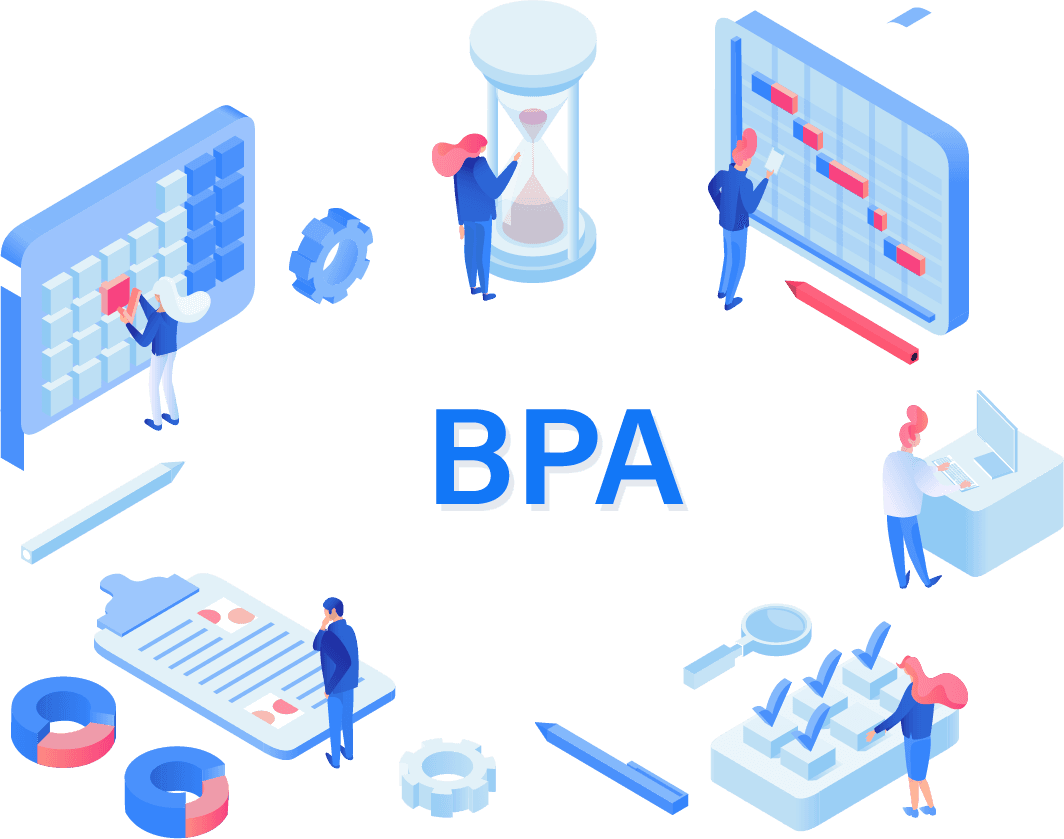
Does Your Company Need Business Process Automation?
If you answered no, we are here to guide you toward the right path to understand why business automation is integral for your business to succeed.
If you answered yes, then let’s explore the benefits together and how easy process automation is especially when done using the right tools.
The Time has Come for Automation
Computers have become supercomputers, not just the ones owned by governments but those used by people. Newer technologies like Alexa and Siri voice control systems have made life easier for the common man. You can now easily change channels, order groceries, or explore new deals on a website by simply asking your AI assistant to do them for you.

Why not implement that level of convenience in business? Automation has touched almost every business and industry around the world. Machine learning and artificial intelligence (AI) take automation to a whole new level. Automation could bring out the best potential in employees, save time, make tasks more efficient and contribute to efficient business growth. The so-called “intelligent automation” is changing how humans and machines interact, which in turn increases business efficiency and helps to overcome challenges. Research studies show that business process automation has tremendous benefits.
The IBM Institute for Business Value, in collaboration with Oxford Economics, conducted a comprehensive study to analyze the impact of intelligent automation in businesses. One of the questions asked was to choose one of the options which will be essential thing defining the competitive edge of companies in the next three years – a) lifelong customer experiences, b) workforce skills and responsiveness, c) data security and privacy d) innovation.
The study revealed that 79% of executives implementing automation expect their organizations to outperform their competitors in the next three years. 75% of respondents felt automating customer services is a tremendous digital initiative driving excellent value. 90% of executives agree that intelligent business process automation helps to create high value for their employees.
An Insight on Automation Evolution
Before going into detail on business process automation, let us briefly overview the automation evolution. You can find how task automation has spanned throughout human history. The evolution of automation dates back to the Mayans who automated water transportation via aqueducts to Jacques Vaucanson’s famous “The Pooping Duck” to Henry Ford’s mechanical automation. Digital reinvention leads to the new age of “intelligent automation.”
The paradigm of automation shifted in the digital age as more and more digital-related tasks required humans to interact with technology-supported processes. With the introduction of Enterprise Resource Planning in the 1960s, the automation of data-driven tasks slowly evolved into robotic process automation called the “bots.”
Combined with advanced technologies and artificial intelligence tools, high-density file systems create new opportunities for automation. Intelligent automation is becoming the norm for optimizing business processes. Modernized data platforms can capture anomalies and interpret learning patterns in a multi-faceted environment.
Since the 1960s, automation has evolved into these four types with distinct characteristics – foundational automation, advanced automation, intelligent automation, and enterprise-wide intelligent automation.
Foundational automation
Here, task automation is fueled by software algorithms. It helps in removing any manually performing repetitive tasks which involve structured data. Business process management tools and selective, robotic process automation capabilities eliminate errors and biases and accelerate performance.
Advanced automation
When there are multiple systems to be integrated and require support from both humans and machines to perform executive functions, then advanced automation is all you need. It can support more complex business processes when it is coupled with unstructured data and involves complex data processing. Advanced automation requires expert knowledge as it enables decision support for work.
Intelligent automation
Here AI assists the automation and performs actions with minimal routine human intervention. The routine interventions include scheduling events, monitoring tasks, and data/analytical processing. AI enables reasoning and learning abilities through cognitive computing. It uses cognitive computing to analyze complex business processes and operational information from multiple sources and process them efficiently.
Enterprise-wide automation
Here, the automation is quite comprehensive as intelligent automation is used pervasively across the organization at different levels. The benefits of enterprise-wide automation are beyond comprehension as it transforms how work is done.
What is Business Process Automation? The Real Definition
Before getting to know what is business process automation, you need to know the definition of process automation.
Process automation can be defined as the process of automating complex business processes. It has three functions – automating processes, centralizing information, and reducing human intervention.

For instance, think of a car wash. A fully automated process will look something like this:
* Customer chooses the type of wash they want → system requests payment → customer pays → approves payment and initiates wash request → notifies the customer to drive into wash → sensors now identify if the car is in the right position and advises the driver to stop → other sensors measures car size and height → now based on the collected information, the software runs the pre-defined program. It includes variables such as rinsing, wash cycles, soap and brushes, waxing, and blow-drying the car → when the wash is completed, the customer gets notified to exit the car wash.
* A car wash may sound simple, but this is one of the most seamless and familiar forms of automation. The program seamlessly integrates with the customer and simultaneously communicates with the hardware and accounting systems. You need to know that the carwash is completely automized, and there is no human intervention. Therefore, process automation streamlines a system and simplifies complex business processes to increase productivity.
Business Process Automation may sound like an intimidating affair for managers and team leaders at first. Most people in the top management are worried about wasted time and the effort required to implement automation.
Business Process Automation is a process widely adopted by all major companies and even startups these days. In other words, BPA is a mandatory inclusion for a business which at the end of the day leads to better business and improved customer satisfaction. Business process automation makes use of dedicated software and computers, and smartphones to promote productivity in the most subtle manner.
In reality, automation has far more advantages than the short time you spend in integrating it into your daily processes. Automation can make your employees and your business more efficient than it has ever been by removing delays, bottlenecks, and documentation processes.
The process of removing manual processes and automating them, identifying bottlenecks, saving time wherever possible, and making document management easier all fall under the term business process automation.
Business Automation Types
When enterprises make some tasks “automatic,” they can save time and eliminates redundancies, helping to improve overall productivity. With many enterprises incorporating automation in their business processes, these are some of the types of business process automation.
Robotic Automation
Well, when you hear the word “robot,” you will immediately think of mechanical arms, Boston Dynamic’s weird but adorable dog-like robots, or even Optimus Prime from the movie Transformers. However, robotic process automation (RPA) does not involve any of these robots and uses something like UiPath, IBM, etc.
An RPA is essentially a bot. The bot is specially designed and trained using machine learning algorithms to make it perform a high volume of repetitive tasks. The bot will be trained for many tasks, such as form checking, data entry, and rekeying the interface between humans and the application for easy streamlining. The advantage of bots is that, unlike humans, they don’t get bored and tired and don’t need time off and sleep.
This is why RPA bots are more efficient and reduce human intervention. They solve complex high-level problems more strategically and creatively. The only disadvantage is that the initial setup of bots can be a little higher, but it will be a smart investment for your enterprise in the future.
Cognitive automation
Cognitive automation gives you leverage to take BPA and RPA to the next step to enhance your business outcomes. It enables you to correlate volumes of data from multiple sources and conduct in-depth analysis, which is not merely possible by human efforts. It helps you combine AI and process automation using a spectrum of approaches to scale your business and automate complex decision-making.
There is a wide range of cognitive automation tools available – intelligent process automation (IPA), intelligent business process automation, digital process automation (DPA), hyper-automation, and other cognitive services.
Cognitive automation tools are mainly used for their ability to identify and streamline crucial information, bots for better interface integration, and automatic decision-making to speed up processes, reduce human errors and enhance customer experience.
Cognitive automation can be simple with customizable features that can be used easily with expertise. The cognitive automation tools are resilient and often meet all your requirements. Moreover, you will need a little engineering expertise when you have a sophisticated autonomous cognitive automation system. These tools help reduce business risks and efficiently scale large amounts of crucial business information.
Server Automation
Servers are an integral part of enterprise applications. If they are not managed properly, they can waste a lot of IT admin’s time. This is very similar to database automation and includes tasks such as new server software deployment, inventory management, compliance and patching operations, and enabling database automation to remove human errors.
Server automation comes in two forms: software suites and point tools. Software suites are a more practical solution compared to point tools. Though the initial investment is huge and takes much time to install, they cover all business process needs using the available resources. On the other hand, point tools are cheaper, easier to install, and suitable for small businesses. Unlike software suites, they focus on one kind of automation. So you need many point tools to get comprehensive automation that can be done using a single software suite.
Database Automation
Any business with a substantial amount of data will have a database. In order to build a strong workforce collaboration application, you need to set up a robust database. Only with this can you keep pace with the competitors.
Having a well-designed user interface is critical for getting things done quickly. Also, you need a database to store all the necessary business information. The problem is that databases can be pretty complicated. Many times, they will be duplicated across various clusters with minimal variations. This will hinder the performance of database administrators.
Fortunately, database automation is there to help. Database automation makes boring and time-consuming tasks go quickly. The database automation enables you to convert manual, repetitive tasks to automated ones and gives you performance tuning. In addition, when you have a good database automation program, you can minimize human errors and automatically create new databases consistently.
Department Specialized Automation
When you want to garner specific automation needs, you can specialize in automation tools as per your department’s needs. While many automation tools are designed for general business needs, you may sometimes need features specifically for your department.
Departments that successfully implement automation include HR, marketing, accounts, and much more. Let us take a look at each of the departments.
HR Automation:
Hiring new employees can be tedious. It starts with an online job ad posting and ends with the official onboarding of the new hires. So, having a human resource management system (HRMS) can be a wise investment for your enterprise.
HRMS can be a valuable tool to automate the candidate management process. You can use HRMS to send invites, screen candidates, schedule interviews automatically, manage data, assess and report, onboard, and much more.
HRMS provides critical insight into a company’s workforce productivity using analytics. Moreover, it also helps with employee record retention and retrieval, online job application reviewing, documenting new employee work contracts, employee tax form management, training requirements, etc. HRMS helps companies keep track of the tasks of each employee in a company and enables ready reports for managers and leaders to pinpoint specific problems and make informed decisions.
Marketing Automation:
Marketing is a crucial and laboring task that automation can simplify. With the help of marketing automation tools, you can generate high-quality leads. You can easily target, execute, build and measure the complexity and success of your marketing campaigns.
Some marketing automation enables users to automate email marketing processes, track and measure prospect activities, analyze their readiness condition when there is a new buyer, and deliver leads to sales with pre-defined criteria.
With marketing automation tools, you can save a significant amount of time spent on redundant tasks. It will help you focus on the important tasks and combines functionalities that translate into substantial benefits. Marketing automation tools allow you to create high measurable ROI for your business campaigns.
Accounting Automation:
Managing accounts and bookkeeping can be exhausting. Automating the accounts and bookkeeping can save a substantial amount of time on billing, accounts payable (AP), accounts receivable (AR), billings, collections, data backup, and other financial processes which are done daily or weekly.
Companies can also use accounting automation tools for some core processes such as general ledger (GL) and bank account management and closing bools. Automation tools make the crunching and transactional work more manageable.
Still, around 55% of companies manually handle their accounts payable processes. When companies use automation tools, it saves them time and money. Data is captured automatically and creates invoices that are electronically routed for approvals. This makes the AP processes more secure and prevents fraud.
Therefore, when companies automate some of their accounting processes they can free up time and shift their focus on crucial tasks such as strategy formulation, analysis, and collaboration.
Manual vs. Automated business processes
Despite the technology at our disposal, most businesses rely on manual processes for getting things done. This often leads to chasing down errors, solving inaccuracies, reconciling data, and wasting time.
According to a research study, procurement, supply chain, and financial enterprises spend around 31% (1/3rd) of their time dealing with paper-based manual processes which costs them around $2.6 million every year. Just because manual processing has been in use for a long time, it doesn’t mean that it is the best solution. If you want to outperform your competitors, then it is time to implement automation in your business processes. Let us take a look at the benefits of business process automation over manual processes in rebate management.
| Manual vs. Automated Process in rebate management | |||||||||
|---|---|---|---|---|---|---|---|---|---|
| Entirely depends on human involvement to add, edit, update and check data. | The software will automatically calculate, allocate, and rebate data with minimal human intervention. | ||||||||
| Reminders for approving amendments are sent manually, where errors are commonly found. | Proactive email settings can be done to notify both the infernal members and trading partners. | ||||||||
| Audit trail in manual processing can be a little tedious as it is easy to falsify information, and the possibility of missing certain information is high. | In automatic processing, every data is logged in accurately with date and time, minimizing data loss. | ||||||||
| Often communication happens outside the process via email or phone. | Here all communication happens within the tool so as to keep track of records. | ||||||||
| Since data is stored manually, you need multiple tools, and it is a lengthy process. | It is a shorter process since everything is automated and data is managed in a centralized platform. | ||||||||
| The level of accuracy depends on the person’s competency in handling large volumes of complex data. | The scope of error is marginal. Automated process centralizes and processes data in real-time with minimal human intervention. | ||||||||
| Managing lots of paperwork can be challenging and cannot be stored securely. | An automation tool provides cloud-based storage features Where the data can be securely stored, and password protected. | ||||||||
| Scalability issues are faced here as the larger volume of data, slows down the performance. | The automated process enables multiple users to handle huge volumes of data that are easily scalable. | ||||||||
| Approval takes a lot of time as tracking down the contracts takes time and often leads to missed deadlines. | Automated collaboration tools create trading agreements and send them to the approver for speedy signature. | ||||||||
| Productivity is wasted as an individual becomes frustrated with manually handling huge volumes of data. | In the long run, the automated process becomes more reliable and helps improve productivity. | ||||||||
| Compiling detailed reporting can be time-consuming. | Automated tools automatically give you detailed analytical reports, highlighting all the essential performance details for future growth. | ||||||||
Stages of Business Process Automation.
According to a 2020 McKinsey global survey, 66% of business leaders worldwide plan to automate at least one business process in their enterprises, and only 15% of businesses have successfully implemented process automation on a full scale across multiple functions. A comprehensive business process automation has four stages: Analysis, execution, integration, maintenance, and support.
- In the first stage, before getting into analysis in detail, it is essential to understand the existing workflows, infrastructure, and capabilities. Implementing automation without analyzing the business processes will have a negative impact on the company’s performance. When the stakeholders have studied the current systems and the nature of the processes, they choose the right automation tool. The tool should complement their objectives and fulfill their requirements. If the enterprise is new to business process automation, it is best to choose one BPA tool at a time. As they progress through time, they can select multiple automation tools to enhance their performance.
- In the execution phase, the selected automation tool is customized and implemented. The stakeholders will be responsible for creating tasks, exploring its functionalities, training the end-users, and assigning user access. In the execution stage, the automation tool undergoes rigorous testing to ensure that the tool complements all its needs.
- In this stage, the new automation tool is integrated with the company’s third-party solutions and other enterprise systems. Data from other external sources are combined and integrated with the tool. The integration in this stage is accomplished using APIs.
- Maintenance and support is the final stage, and it is a long-term stage too. Enterprise will identify the bottlenecks and redundancies upon implementing the new business automation tool. They need to update regularly and ensure that the enterprise has access to technical support as and when required.
What are the Different Components Found in Business Process Automation?
Using business process automation tools is just the beginning because there are different components involved in automation.
You can either choose to focus on one particular task at a time, mix multiple tasks or revamp the entire structure of your company to make it more efficient than it is.
Business Process Improvement
The term BPI refers to identifying all the slow and inefficient ongoing processes and finding a way to speed them up. Business process automation solutions can be applied in the entire process or a single aspect of the task can be automated so as to make the task more responsive.
Business Process Re-engineering
The term is quite self-descriptive! The BPM cloud process involves re-engineering the entire process when it is evident that there is no way it can be fixed with simple automation. When legacy technologies and platforms are slowly falling apart, some of your old processes from decades ago might require BPR.
Business Process Management
The term BPM refers to managing the strategies that you have already established using BPI and BPR. A BPM process involves creating workflows that suit the requirements of a business and successfully maintaining them through the years. A streamlined approach to carrying out the tasks is possible only when the entire workforce is aware of the same and contributes their best. All redundant tasks that no longer require human intervention can be automated.

The big advantages of adopting Business Process Automation are
- Reduced expenses
- Efficient management of resources
- Reduced workload on employees
- Better communication and
- The ability to serve customers better
It wouldn’t affect your everyday business process or how tasks are being carried out already.

The bpm tool seamlessly integrates into an environment and starts removing all identified bottlenecks immediately. The software also removes the communication gap that is prevalently found in organizations between team members and upper management which speeds up the decision-making process.
Your Success Mantra to Establish Automated Business Systems
The core purpose of business automation is to bring out the efficiency of an underutilized workforce with the help of process management tools, automation, and category-driven business strategies. A successful business has to have cordial relationships with vendors, and customers and create a positive outlook among employees so that they are inclined to deliver their best every time.

Here’s how it can be accomplished:
Streamlined Commands
A centralized network is what an organization needs and the BPM cloud servers will provide the spot for everyone to receive commands while responding back which will be transmitted to everyone else.
Automation Wherever Possible
A major share of tasks may not require human intervention at all while some require minimal intervention. All tasks can be fully automated which reduces the chance of human errors, improves delivery time, and save employees from wasting their skills on repetitive or mundane work.
Networking and Accessibility
Business process management is all about creating a network of data that is readily accessible through the BPM cloud. It also ensures that the bpm solutions established are spread across the organization and everyone is using it.
Expect Big Change When You Implement Automation
When you implement automation, you can expect

Better document management
Every document will be moved to the cloud making it easier to access them on multiple devices and safeguard them against physical damage.
Improved Time for Employees
Employees will have more time to focus on their immediate tasks and not wait for approvals or to meet managers, team leaders.
Efficient Resource Management
Automation is a boon for small and medium businesses where there is no need to increase employee numbers but you can rather focus on better utilizing what is available.
Reduced Human Errors
Humans do make errors especially when they are loaded with work. Software tools avoid those errors by taking control of redundant tasks and allowing them to focus on more skill-based work.
In-depth Reports and Analytics
Knowing more about your business’ performance is made easy with automation tools as they provide in-depth reports and analytics for you to analyze quickly to make informed decisions.
The best part is the automating efficiencies.
Most business leaders anticipate the wats to “optimize business processes.” here is where AI comes into play.
The other major areas AI impacts are personalizing consumer experiences and enhancing forecasting and decision-making abilities. This can be made using intelligent automation.
Advanced and intelligent users adopt AI-driven tools at a much early stage. Therefore, they can reap significant benefits that impact a multitude of their businesses.
Achieving business process automation has several benefits. It increases productivity, reduces errors, improves customer satisfaction, reduces operating costs, improves employee engagement, maximizes resource utilization, and much more.
The shift in technology is a shift in the workforce.
Machines are replacing human beings in large numbers. Automatons made with new technologies rapidly change the workforce. 78% of enterprises readily embrace the workforce shift due to automation. They will allow intelligent business automation machines to make complex decisions for real-time problems and solve mission-critical challenges decisively.
Therefore, intelligent business process automation is the future of work. When adopting intelligent automation, enterprises can create a more flexible work culture by striking the right balance between man and machine labor. Intelligent automation tools understand signals from data in ways humans comprehend but with far greater speed and accuracy. They can learn to respond to interactions accordingly.
The Only Business Process Automation Tool You Will Ever Need
Cflow, a business process automation tool made for businesses of all sizes and types is the software you have been looking for all along. We have designed it in such a way that the no-code bpm software is easy to use even without any coding knowledge.

Cflow Ticks all the Right Boxes
Cflow is a tool that is designed for professionals and has everything a business process automation software should have including,
- The easy visual UI workflow builder
- Integration with popular third-party tools and Zapier
- Bunch of readymade workflows to make use of
- Cloud-based storage and file access
- Works on iOS and Android
- Reports and Analytics
With the ability to choose from a range of workflow templates and create new workflows as required, automating your business processes has never been easier. Cflow is the cloud BPM you have been looking for and the only tool that you will ever need for process automation.
Ready to get started?
Learn more about Cflow’s best features, how it can automate and be the most reliable Workflow Solution that could revolutionize your operations.
